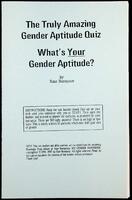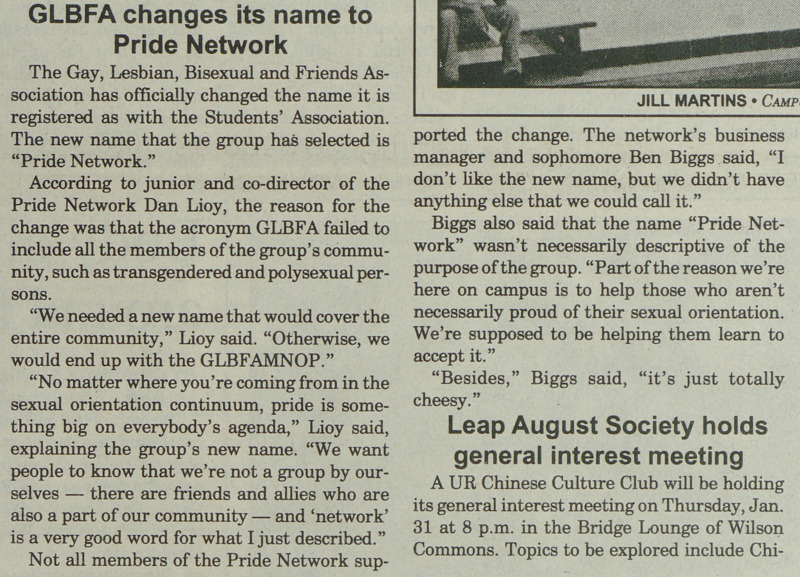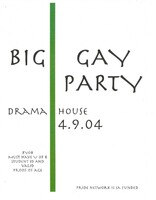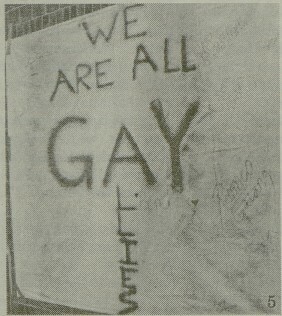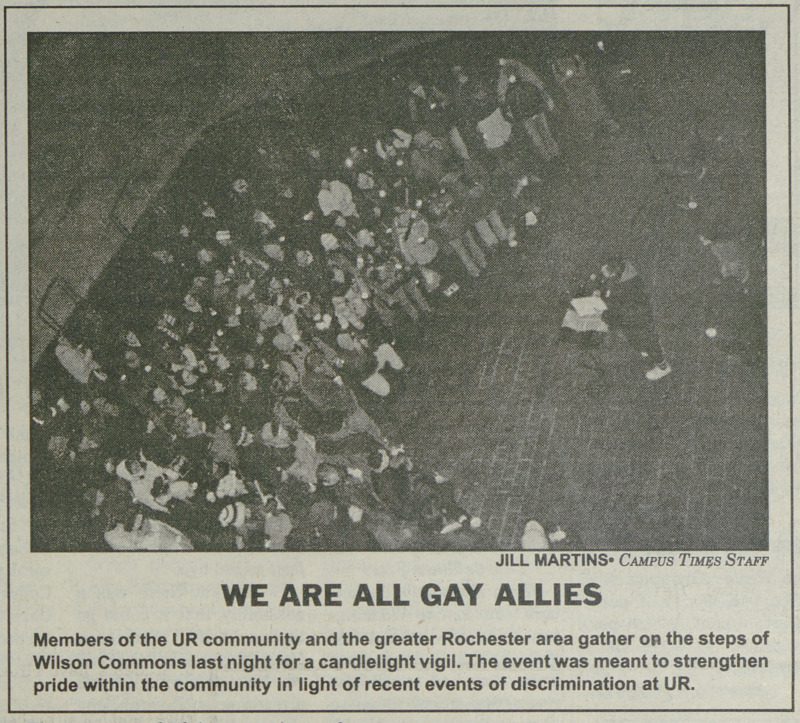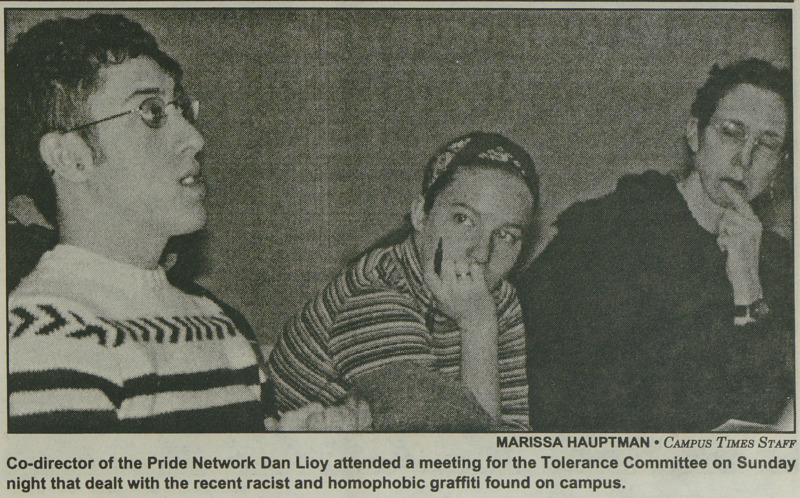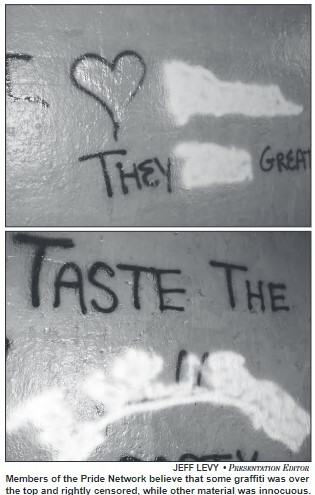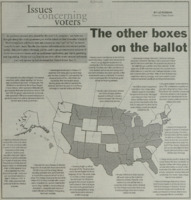2000s
Transgender Awareness
The 2000s brought about a wave of transgender visibility and inclusion. In the aftermath of trans speakers being invited to speak at the university by the GLBFA, people considered the lack of inclusivity in the group's name. Once more the group changed its name- this time to Pride Network which it remains named to this day. The name, Pride Network, allows for the inclusion of any sexuality or gender identity. This wave of 2000s trans activism was somewhat theoretical and related to bigger social movements of the age. There weren’t yet many visible transgender students or faculty speaking out on campus. Pride Network, moving towards transgender inclusivity, pushed for protections for gender variance. However, the article covering their advocacy on this issue didn’t mention or include any transgender student perspectives. [35] These early efforts were a step forward that would be carried even further by transgender students and supportive administrators in the following decade.
- Kate Bornstein, a transgender author and playwright spoke at the University in September of 2000. This gender aptitude quiz booklet was found among the GLBFA documents. The quiz breaks down gender and stereotypes, allowing scrutiny over the gender infrastructure of society.
- Leslie Feinberg, a famed writer and trans activist, visited the University of Rochester in November of 2001. Leslie Feinberg identified on the trans spectrum and used many sets of pronouns, preferring ze/hir. Ze spoke about hir identity to the more than 100 students, sharing hopes that the ‘T’ wouldn’t be so divided from the LGB community.
One Final Name Change
At the outset of the spring semester of 2002, just months after Leslie Feinberg’s visit, the group retired its name one final time. The GLBFA became Pride Network and the new name could encompass a myriad of identities. While the members of the group may have had mixed feelings about the new name, it has served the university community well. Over two decades later, Pride Network has kept its name and continues to grow as a safe space for LGBTQ+ students.
Gaypril
April pride celebrations were popular amongst students, gaining momentum and magnitude over the years. By the 2000s, Pride Week was turning into Pride Month, or “Gaypril” as it was branded. This allowed for even more visibility and events to strengthen the presence of the LGBTQ+ community on campus. Events encouraged pride and joy to be found in identity. One new tradition was a party, similar to the dances of the Gay Liberation Front’s heyday. Each April, the group would throw a “Big Gay Party” in Drama House which attracted many people. The month of events featured activities ranging from educational lectures to drag performances, all relating to LGBTQ+ life.
These Pride Month celebrations attracted attention from many corners of the campus community. This attention was, unfortunately, not always positive. The early 2000s saw a lot of anti-gay vandalism from tunnel walls, to posters, to the snow outside. [36] However, the student efforts in reacting to these acts of homophobia allowed for strides of progress and protection of LGBTQ+ students. Some of these efforts can be seen below.
Gender Identity and Expression
In the Spring of 2004, Pride Network started plans for a Student Association amendment aiming to protect students’ gender identity and expression. The proposed amendment would help any student facing issues based on trans identity, gender variance, or gender presentation. Such policies would be beneficial not only to transgender students but to any student not conforming to traditional gender roles. The following fall proved the need for such efforts. An Eastman student who enjoyed participating in drag presented to Pride Network, only to be judged by peers in the Eastman pride group meeting for over-the-top flamboyance and expression. He previously had been beaten up for being gay outside the Eastman dorms. He wrote an article calling for wider acceptance of any identity, not simply those who conform to society. Prejudices ran wild on campus, even within the LGBTQ+ community. The campus community was enjoying the fun drag shows and queens who would visit to perform, but judging the students who lived slightly out of the norms. In the student’s words, the university needed to “practice acceptance, not just tolerance.” Students themselves had to push for more and more acceptance, often advocating for themselves to peers, faculty, and administrators alike. This is especially important to consider, showing the double standard between fun events and day-to-day life.
Debates on Gay Marriage and Gay Rights
Once again, sexuality was a big issue for debate. It wasn’t solely a campus debate, all across the country people were beginning to seriously consider gay marriage as a legal battle. This elicited many intense articles, polls, conversations, talks, and venues for folks to share their opinions on the matter. More than ever, the election seasons marked times of political consciousness around sexuality. Surrounding the elections the Campus Times would feature major debates ranging from gay marriage to gay rights to education about homosexuality.
Increased LGBTQ+ Visibility
The increased visibility of LGBTQ+ identity in mainstream culture was seeping into all areas of life on campus. While this did often mean debates, it also applied to popular culture. There were more and more celebrities with casually mentioned sexualities. The Campus Times tabloid-esque relationship column, “Sex & the CT,” would occasionally answer a question about LGBTQ+ issues, ranging from experimenting with sexuality to sexual reassignment surgery. These answers were treated the same as any other inquiry, with respect and an effort to educate. Not all mentions were perfect representations but awareness of these topics was spreading rampantly. The genres that mentioned sexuality also expanded. The 2000s “From the Pressbox” Sports column saw a number of stories on openly gay athletes which challenged stereotypes. There were also ever-increasing numbers of gay students unafraid of openly writing articles about issues they were passionate about. Of course, this was in no way a new phenomenon, it was built upon the decades of brave students back to the Gay Liberation Front. However, the changing social climate allowed for this level of heightened visibility.


